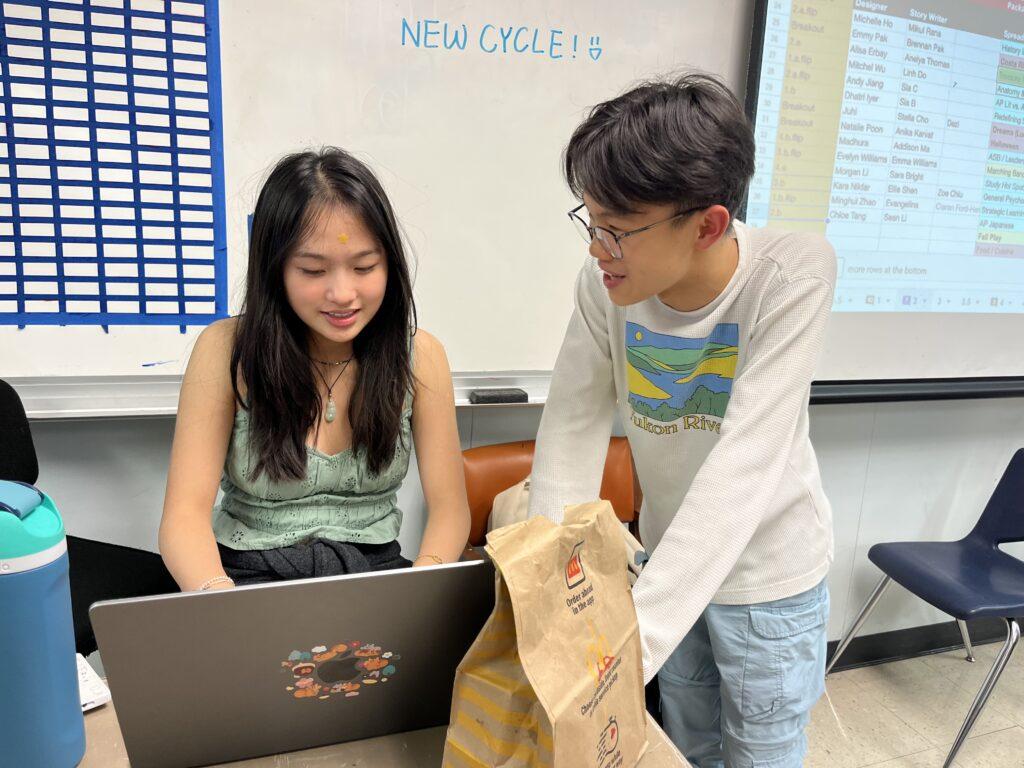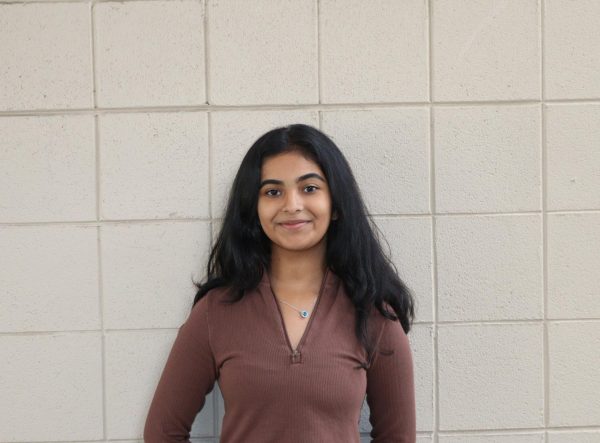The yearbook class has faced a new post-pandemic reality in recent years: It has seen a decline in enrollment from 33 students — all sophomores, juniors and seniors in 2019-2020 to 25 students in 2020-2021, a drop of 24%.
The next year was worse, with only a dozen sophomores, juniors and seniors returning to staff. As a result, the class was combined with the introductory Journalism 1 class in 2021-2022.
The same combination of students has been charged with producing the school’s yearbook ever since.
Another result of these trends the yearbook has experienced a shift in their leadership this year. For the first time in recent history, three out of its four editors-in-chief (EICs) are juniors. They were picked for the position last spring by adviser Megan Laws.
Timothy Leung, Amy Pan and Ava Sadeghi share leadership duties with senior Grace Li. Leung, like the other juniors, began to work on the staff while taking Journalism 1 as a freshman.
“I feel like two years was enough for us to get started. We are definitely learning new things every day, but I was a design editor last year and I got a lot of experience from that,” Leung said.
Nevertheless, the top leadership position has been harder than he initially anticipated. Leung said he has had to learn skills in fields that he previously knew little about, such as managing publishing details, adapting to new workspaces and, perhaps most relevant in the early part of the year, teaching key skills to new staffers who know little to nothing about journalism. There are now 20 freshmen in the class.
Ordinarily, the class would begin introducing the first cycle of spreads — 2 side-by-side pages in the yearbook — right away. However, the EICs now do what they call a “journalism bootcamp” due to the lack of a proper Journalism 1 course to introduce important concepts.
This bootcamp condensed the previous year-long Journalism 1 curriculum into six weeks, after which the new staffers, affectionately called “yearbies,” began to test the waters out on their own by creating their own spreads.
“We really want to make sure that from day one, we give them a strong foundation [of journalistic principles],” Leung said. “Especially because right now, we are teaching basic concepts rather than running a well-oiled organization. We have to make sure that the freshmen are able to understand their tasks.”
He said it has been hard to check in with the new students considering the breadth of journalistic and yearbook-specific concepts they must internalize quickly. Some students are, for the first time, learning the writing and editing processes, fundamental terms like headlines and captions and more nuanced yearbook terms like mod, an informational graphic that supports the theme of the spread, or folio, the page number.
Though he is limited in teaching experience, Leung said that planning daily schedules during the first few weeks have been made easier by lessons they’ve learned from past years.
“Being too nice or not enforcing rules from the beginning can backfire,” he said. “We really want to make sure that from day one we have a strong foundation and command over the class. We’ve really been trying to plan ahead and make sure that people always have something to do.”
As a result of the time lost to the six-week introductory period, efficiency is all the more imperative during the rest of the year. To maximize staff productivity, Leung said he and his fellow EICs have implemented a personalized partnering system when assigning spreads. Those who meet deadlines most efficiently have the chance to pick spread topics of their choosing, while the other team members are assigned based on what topics or designs fit best with the team.
Additionally, the class has shifted their primary working platform from Discord and Google Sheets to Asana, a district-approved platform designed to help teams manage and track their work. With that, the EICs and other staff members have all had to adapt to the new workspace.
Amid these changes in the class’s structure, the four EICs have found their synergy as a team to be their guiding force. Leung said that capitalizing on their individual strengths has proved to be an asset when navigating their new responsibilities.
“We work really well together and somehow we get things done. I would say me and Amy are a duo who [gears more] towards design,” Leung said. “Grace is really our backbone; she makes sure everything is organized, while Ava is really good at writing and being a leader.”
Though the topic of who will return to be an EIC next year remains to be determined, Laws said that the current junior EICs will have an equal shot at retaining the position next year as any other upperclassmen who exhibits leadership qualities does
Leung said an additional strength in their staff is a willingness from new staff members to learn new journalistic concepts — giving them hope to retain the current freshmen in the class next year.
“[Our new staffers] have really been a breath of fresh air. Even if they don’t have all the tools and experience yet, they definitely have the drive and the creativity,” Leung said. “There is a really big learning curve, but to see that talent and willingness in them has given us hope and assurance for growth.”




























